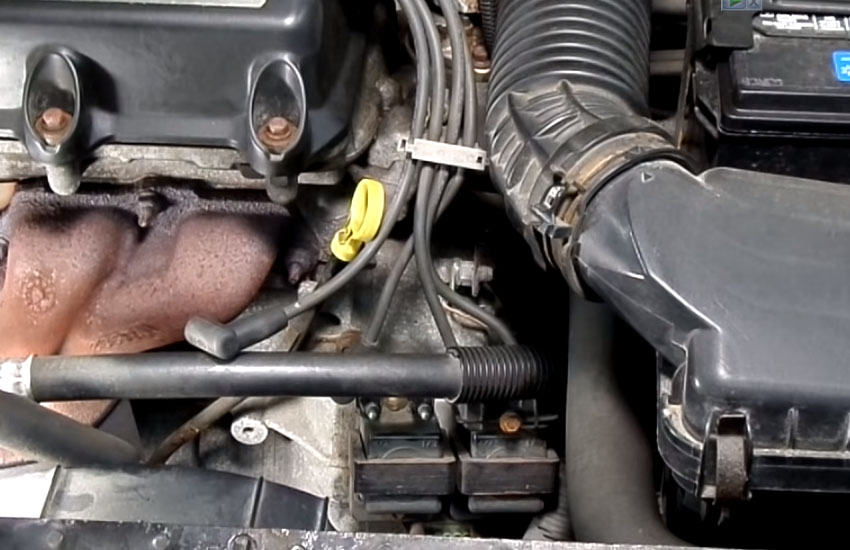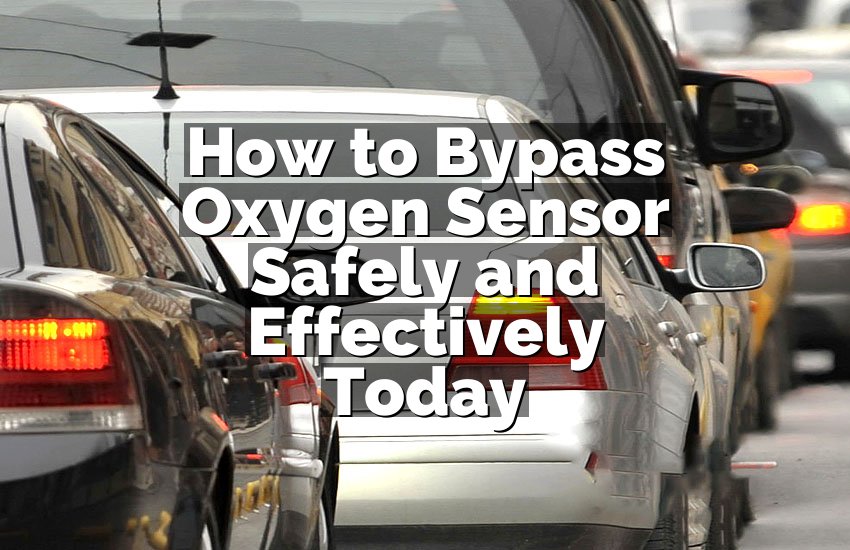Starting a car with a faulty crankshaft sensor might seem tricky, but don’t worry – it’s doable with a few simple steps. The crankshaft sensor plays a vital role in the engine’s ignition system, and when it malfunctions, starting your car becomes a challenge. In this quick guide, we’ll walk you through the basic steps to get your vehicle running smoothly again, even with a bad crankshaft sensor. No need for advanced mechanical skills – just a bit of patience and a willingness to follow some straightforward instructions.

Diagnosing The Issue
When it comes to starting a car with a bad crankshaft sensor, diagnosing the issue is the crucial first step. The crankshaft sensor plays a vital role in the ignition system of a vehicle. It tracks the rotation speed and position of the crankshaft, which is essential for generating the ignition spark. If the sensor malfunctions, it can lead to starting issues and affect the overall performance of the car.
Recognizing The Symptoms
Recognizing the symptoms of a bad crankshaft sensor is essential for diagnosing the issue. Some common indicators include difficulty starting the engine, intermittent stalling, and engine misfiring. When faced with these symptoms, it’s important to address the issue promptly to avoid further complications.
Using Diagnostic Tools
Using diagnostic tools can help pinpoint the exact problem with the crankshaft sensor. OBD-II scanners are commonly used to retrieve diagnostic trouble codes (DTCs) from the vehicle’s computer. These codes can provide valuable insights into the specific issues affecting the sensor. Additionally, a multimeter can be utilized to test the sensor’s electrical resistance and ensure it is functioning within the manufacturer’s specified range.
Preparing For The Start
To start a car with a bad crankshaft sensor, first, locate the sensor and inspect for any damage or debris. If there are no visible issues, try tapping the sensor lightly to see if it helps the car start. You may also consider testing the sensor’s functionality or seeking professional assistance for a more in-depth diagnosis.
Checking Fuel And Ignition Systems
Before attempting to start a car with a bad crankshaft sensor, it’s crucial to check the fuel and ignition systems. A faulty crankshaft sensor can disrupt the communication between these systems, causing the car to not start or run rough. Here’s how to check the fuel and ignition systems:
1. Inspect the fuel pump: Ensure that the fuel pump is functioning properly by listening for a humming sound when you turn the key to the “ON” position. If you don’t hear the sound, it could indicate a faulty fuel pump that needs replacing.
2. Check the fuel filter: A clogged or dirty fuel filter can prevent fuel from reaching the engine. Locate the fuel filter and inspect it for any signs of blockage or contamination. If necessary, replace the fuel filter to allow proper fuel flow.
3. Test the ignition coils: The ignition coils are responsible for supplying the spark to ignite the fuel in the engine. Use a multimeter to test each ignition coil’s resistance. If any of the coils show a significantly different resistance reading, it may indicate a faulty coil that needs replacement.
4. Inspect the spark plugs: Worn or fouled spark plugs can also affect the ignition system’s performance. Remove each spark plug and examine them for signs of damage or excessive wear. If necessary, replace the spark plugs with new ones.
5. Verify proper fuel pressure: Use a fuel pressure gauge to check if the fuel pressure meets the manufacturer’s specifications. If the pressure is too low, it could indicate a faulty fuel pump or a clogged fuel line that needs attention.
Ensuring Proper Engine Oil Levels
Another important aspect of preparing to start a car with a bad crankshaft sensor is to ensure that the engine oil levels are adequate. Proper engine oil lubrication is crucial for the engine’s smooth operation, as it reduces friction and heat. Follow these steps to ensure proper engine oil levels:
1. Locate the engine oil dipstick: The engine oil dipstick is usually labeled and can be found under the hood. Pull it out carefully and wipe it clean with a cloth.
2. Reinsert and remove the dipstick: After wiping the dipstick clean, reinsert it into the dipstick tube fully, and then remove it again. This will give you an accurate reading of the current oil level.
3. Check the oil level: Observe the oil level indicator on the dipstick. It typically has markings indicating the acceptable range. The oil should fall between the “low” and “full” marks. If the level is low, add the recommended type and amount of engine oil.
4. Inspect the oil condition: While checking the oil level, also take note of its condition. Clean, amber-colored oil is a good sign. Dark, dirty, or milky oil could indicate contaminants or coolant mixing with the oil, suggesting a potential issue that needs further investigation.
By checking the fuel and ignition systems and ensuring proper engine oil levels, you can increase the chances of successfully starting a car with a bad crankshaft sensor. Addressing these potential issues will help optimize the starting process and minimize any further complications. Remember to consult a professional if you’re unsure or need additional assistance.
Starting The Car
Starting a car with a bad crankshaft sensor can be a challenging task, but with the right techniques, it is possible to get your engine running smoothly again. In this section, we will explore two methods that can help you start your car even with a faulty crankshaft sensor: using the manual crank and engaging the starter in short bursts.
Using The Manual Crank
If you find yourself with a bad crankshaft sensor, using the manual crank may be your best option. This method requires a bit of elbow grease but can save you from the hassle of calling a tow truck or a mechanic.
To use the manual crank, follow these simple steps:
- Locate the manual crankshaft pulley near the bottom of the engine.
- Insert the manual crank into the pulley and ensure it is securely in place.
- Rotate the crankshaft in the direction indicated in your vehicle’s manual. This typically involves turning it clockwise.
- Continue cranking until you feel resistance and the engine starts to turn over.
- Once the engine starts, release the crank and allow it to run on its own.
Remember, using the manual crank should only be used as a temporary solution, and it is important to address the underlying issue with your crankshaft sensor as soon as possible.
Engaging The Starter In Short Bursts
If you prefer not to use the manual crank, another method to start your car with a bad crankshaft sensor is by engaging the starter in short bursts. While this method may not work every time, it can provide a temporary solution to get your vehicle moving.
Follow these steps to engage the starter in short bursts:
- Insert the key into the ignition and turn it to the “On” position, without starting the engine.
- Quickly turn the key to the “Start” position and then release it immediately. This will engage the starter motor for a short burst.
- If the engine doesn’t start, repeat step 2 until it does.
- Once the engine starts, leave it running to allow the battery to recharge and stabilize.
Remember, this method is not a permanent solution and should only be used to get your car to a safe location or a nearby mechanic. Be sure to address the issue with your crankshaft sensor at the earliest convenience to prevent further damage to your engine.
Safety Precautions
When starting a car with a bad crankshaft sensor, it is important to prioritize safety. Following these key safety precautions will help ensure a smooth and incident-free experience.
Positioning Yourself Correctly
Before attempting to start the car, position yourself correctly behind the wheel. Make sure you are in a comfortable and stable seating position. Adjust the seat, steering wheel, and mirrors to your preference. By positioning yourself correctly, you can maintain control of the vehicle throughout the process.
Having An Assistant Nearby
It is strongly recommended to have an assistant nearby to ensure an added level of safety. Your assistant can help by keeping an eye out for any potential hazards or issues during the starting process. They can provide guidance and support, allowing you to focus on starting the car without any distractions.
Moreover, your assistant can be of great assistance if you encounter any difficulties or if the starting process doesn’t go smoothly. They can offer a second opinion and help troubleshoot any problems that may arise.
Seeking Professional Help
When starting a car with a bad crankshaft sensor, seeking professional help is often the best course of action. Although it may be tempting to try fixing the issue yourself, consulting with a mechanic and considering towing the vehicle can ensure a safe and effective resolution.
Consulting A Mechanic
When faced with a car that won’t start due to a faulty crankshaft sensor, consulting a knowledgeable mechanic is crucial. A mechanic has the expertise and experience to diagnose the problem accurately and fix it efficiently. They will use specialized tools and techniques to identify the specific issues within the sensor and determine the best course of action.
By working closely with a mechanic, you can gain a better understanding of the problem and the steps needed for a proper repair. Their professional insight can also help prevent you from accidentally damaging other components of the vehicle while attempting a DIY fix.
Considering Towing The Vehicle
In some cases, it may be necessary to tow the vehicle to a trusted mechanic’s workshop for further inspection and repair. Towing the car ensures that it is transported safely, minimizing the risk of additional damage or breakdowns along the way.
When considering towing, it is important to contact a reliable towing service that specializes in handling and transporting vehicles. Their expertise will help facilitate a smooth and secure relocation of your car, ensuring that it arrives at the mechanic’s shop intact and ready for evaluation.
Remember, trying to start a car with a bad crankshaft sensor can potentially cause more harm than good. Seeking professional help guarantees that the issue is diagnosed accurately and resolved effectively, saving you time, money, and frustration in the long run.
Conclusion
To conclude, starting a car with a faulty crankshaft sensor may seem challenging, but it’s not impossible. By ensuring the sensor is properly diagnosed and replaced if necessary, following the steps outlined in this guide, you can get your car running again.
Remember to prioritize safety and consult a professional mechanic if you’re unsure. With determination and some troubleshooting, you can save time and money by resolving this issue on your own. Stay confident and keep your car on the road!


